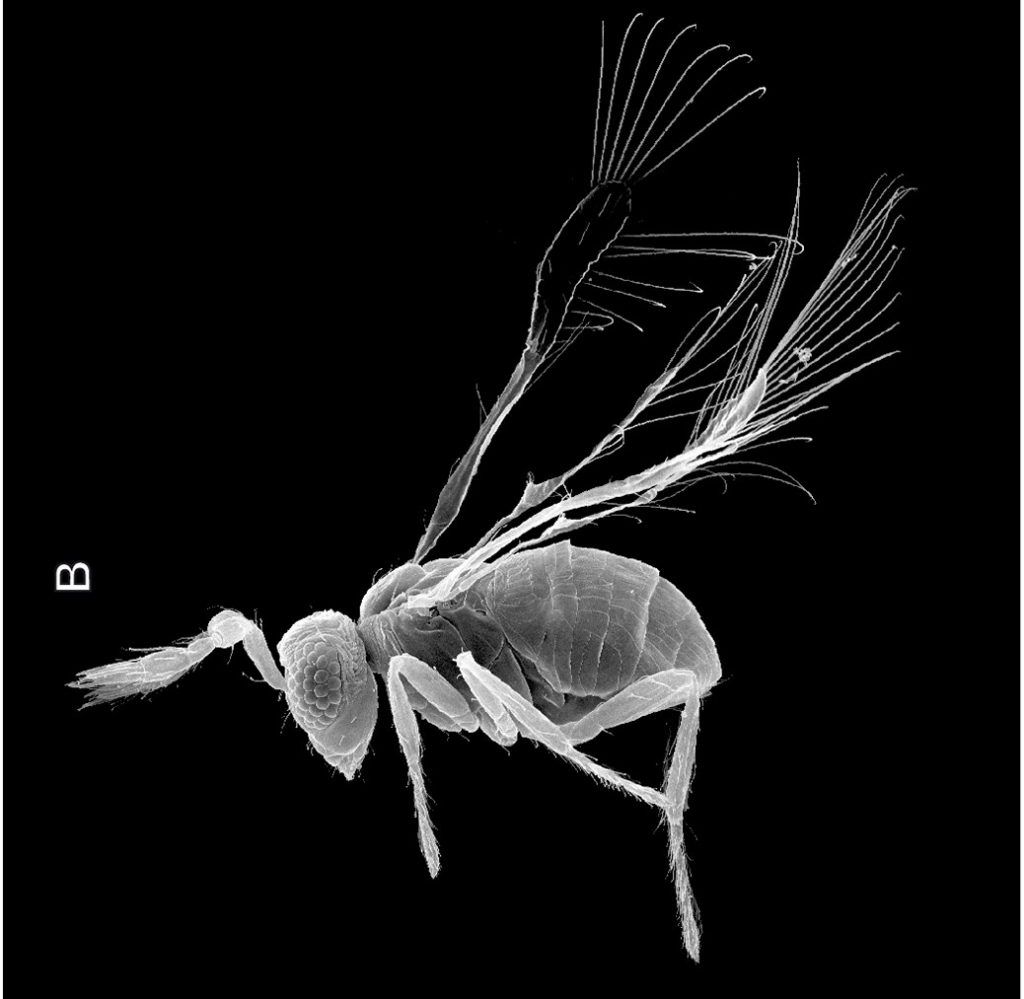Microscopic wasps and their tiny brains could help DARPA develop “third-wave” AI
By Matt Field | January 16, 2019
 Megaphragma mymaripenne, a microscopic wasp. Credit: Alexey A. Polilov CC BY 4.0.
Megaphragma mymaripenne, a microscopic wasp. Credit: Alexey A. Polilov CC BY 4.0.
To solve one of the biggest problems in AI, the Defense Advanced Research Projects Agency (DARPA) wants researchers to think small—really small. The agency put out a call for projects that seek to understand the brains of microscopic flying insects. It’s part of an effort to move past so-called “second wave” AI in which an AI system learns by “training” on huge sets of photos or other data. By developing “third wave” AI, DARPA hopes to create AI systems that solve problems in more natural ways—and mini-bugs may help show researchers the way.
The call for submissions for the $1 million grants is part of a larger effort called the Artificial Intelligence Exploration program. DARPA’s goal is to develop third wave AI systems that create models for how to understand the world. In a handy video primer on the evolutionary stages of AI development, the former director of DARPA’s Information Innovation Office, John Launchbury, says that in third wave AI, “the systems themselves will, overtime, build underlying explanatory models that allow them to characterize real-world phenomena.”
A third wave system designed to read handwriting, for instance, might have a model for how people physically move their hands as they write on a page. It might know, for example, how various numbers and letters are written. Then, when given a test, it could use reasoning based on this model to come to a conclusion about what character it’s looking at. All that could be accomplished by showing the system one or two examples, Launchbury says.
Some of the bugs DARPA wants to study are about the size of an amoeba. According to Discover, megaphragma mymaripenne, a tiny wasp, has only about 7,400 neurons; a housefly has 340,000. Despite their dearth of neurons, the wasps fly, feed, and lay eggs. Moreover, according to DARPA, these miniature insects may “have subjective experiences, the first step towards a concept of ‘consciousness.’” This could indicate that these diminutive bugs are an ideal inspiration for developing third wave AI systems that can create models by which to understand the world.
“This research could lead to capability of inference, prediction, generalization and abstraction of problems in systematic or entirely news ways in order to find solutions to compelling problems,” the solicitation states.
One of DARPA’s hopes is that studying tiny bugs can help researchers develop AI that is more energy efficient and easier to train. The AI systems that underlie many applications like face recognition in use today are trained on large amounts of data. They can then make a statistical judgment about, say, who someone is. DARPA hopes mini-bug research will help “identify new computing paradigms that will enable improved AI with considerably reduced training times and power consumption.”
Publication Name: DARPA
To read what we're reading, click here
Together, we make the world safer.
The Bulletin elevates expert voices above the noise. But as an independent nonprofit organization, our operations depend on the support of readers like you. Help us continue to deliver quality journalism that holds leaders accountable. Your support of our work at any level is important. In return, we promise our coverage will be understandable, influential, vigilant, solution-oriented, and fair-minded. Together we can make a difference.
Keywords: "second-wave" AI, "third-wave" AI, AI, DARPA, artificial intelligence, insects, wasps
Topics: Disruptive Technologies, What We’re Reading















